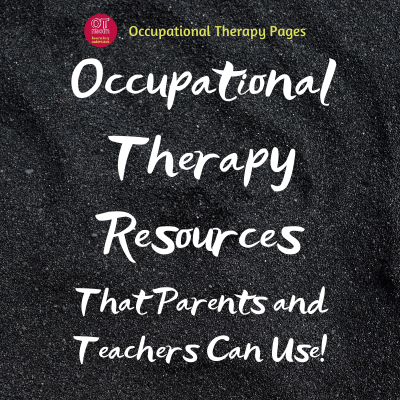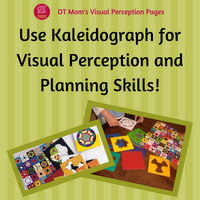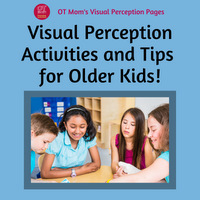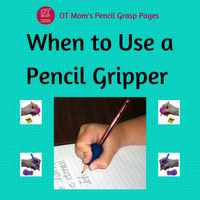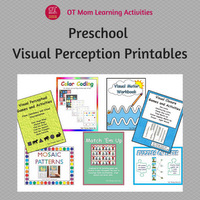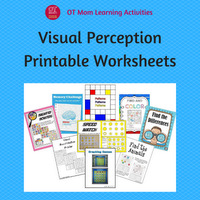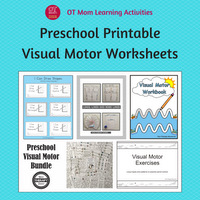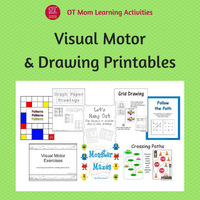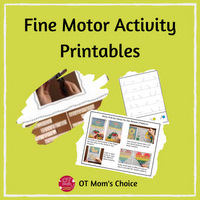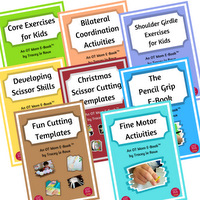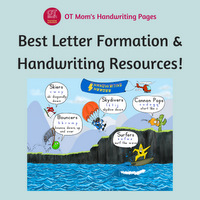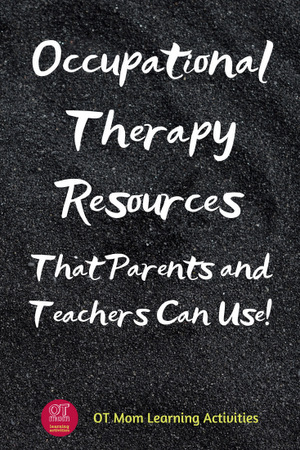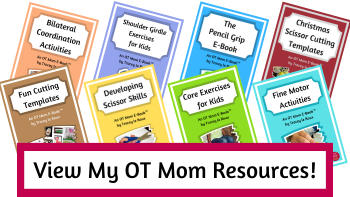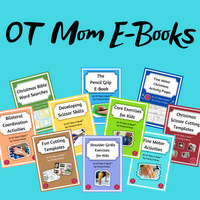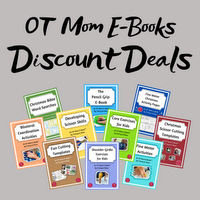- Home Page
- Occupational Therapy
- Occupational Therapy Products
Occupational Therapy Products
There are a wide range of occupational therapy products and resources that can be used by parents, teachers and therapists at home or at school. I have chosen these OT resources specifically to supplement the activities I suggest on my website, to help promote your child's optimum development.
Some of the links in the different sections go to pages on my site which describe or review the product in more depth; other links go directly to the product itself. I hope you find this page helpful!
This page contains affiliate links (#Ad) from Amazon, AppyTherapy and others, and I receive a small commission if you purchase a product through my links. This enables me to keep this free website running! However, you are under no obligation to purchase anything.
Toys And Games That Help Older Kids Build Skills
Sometimes a child needs a little extra motivation to work on certain skills. Especially older kids and teens! These kids can sniff out a "therapy activity" from miles away, and while they may engage with you on the activity for a short time, they don't exactly seek it out on their own.
So sometimes you need to provide toys and games that are motivating enough for your child to engage with it of their own accord, while still building skills.
I have a whole page about visual perception resources you can use with older kids.
And a review of Kaleidograph, explaining how it can be used to help develop visual perception and planning skills.
Try a Thingy Flip for Hand-Eye Coordination!
The Thingy Flip is an awesome toy/game that has been developed to improve eye-hand coordination skills. It can also help improve focus and concentration, and can have a great impact on your child's cricket, baseball, tennis or softball skills.
The Thingy Flip can be used to teach a young child how to toss and catch, but is equally helpful for teenagers and adults who want to perfect their hand-eye coordination.
An Australian creation, it can be shipped to many different locations. A great addition to any sports program, training program, or even as a homeschool break.
It's addictive once you start, as you try to improve your record each time!
Check out the Thingy Flip in action and get hooked!
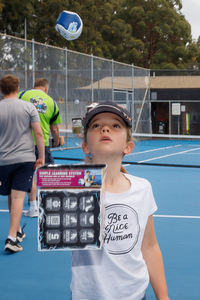
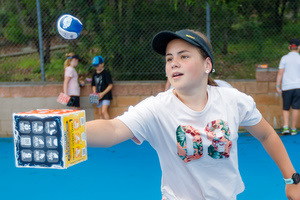 The Thingy Flip In Action!
The Thingy Flip In Action!Pencil Grips
If you are specifically interested in getting a pencil grip for your child, then you may find my article on Pencil Grips for Kids helpful.
I take a look at whether pencil grips are useful, review a couple of different kinds of pencil grips and give some pointers on how/when to use them.
Printable Occupational Therapy Products and Worksheets
If these printable downloads had been around at the beginning of my occupational therapy career, I would have saved hours of preparation time!
Your Therapy Source has made some fantastic resources to help kids work on all kids of skills. I have a few favorites that I go to for specific skills, and on these pages of my website you will find descriptions and tips on how to use them, as well as links to purchase them if you are interested!.
The best part? No matter if you are a parent, a therapist or a teacher, you can use each resource over and over again with all your kids!
And then of course, I have my own products...
my OT Mom E-Books!
These e-books are a treasure trove of photographed activities in an accessible, printable format. All for the price of a couple of coffees!
Handwriting and Letter Formation
Pediatric therapists who work in schools see many kids who need handwriting support. There are a lot of factors that can affect a child's handwriting, and occupational therapists are the best ones to assess what challenges to good handwriting your child is experiencing.
However, parents and teachers can still make use of these fantastic occupational therapy products to reinforce letter formation and basic handwriting practice. I especially recommend the Handwriting Heroes program#Ad to help kids learn their letter formations correctly from the beginning.
Using Handwriting Heroes, lower case letter formations are taught in "groups" of similarly formed letters.
That means that 4 - 6 letters can be learned at a time, as they are formed in a similar way, thus reinforcing the formations.
Their multi-sensory approach, combining digital and printable resources has been proven effective!
Cursive Handwriting Support
Because handwriting gets so little formal instruction in school these days, lots of kids need a bit of extra practice time. Especially when they get to cursive.
Some children really struggle to write (and to read) the loops of
regular cursive handwriting.
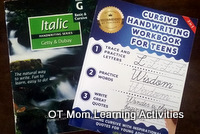
I recommend the Getty-Dubay italic cursive #Ad especially for kids who struggle with poor fine motor and visual perceptual skills, because there are fewer loops to confuse them, and the cursive letters look very similar to the print letters, which makes them more readable.
If your older child or teen wants to practice regular cursive, then these cursive handwriting books for teens#Ad can be very useful.
Use the letter practice pages to work on any letters that are still weak, then have your child practice writing words and quotes in regular cursive.
I hope you found something you can use among these resources! Most of these occupational therapy products have been designed, made or compiled by therapists themselves, so they are truly targeted to the child's needs.
Thank you for visiting!
Please do sign up for my occasional newsletter if you would like to stay in touch with new pages and resources that I add to my site!
- Home Page
- Occupational Therapy
- Occupational Therapy Products
Share this page to help others!
Didn't find what you were looking for? Try a search of my site!
